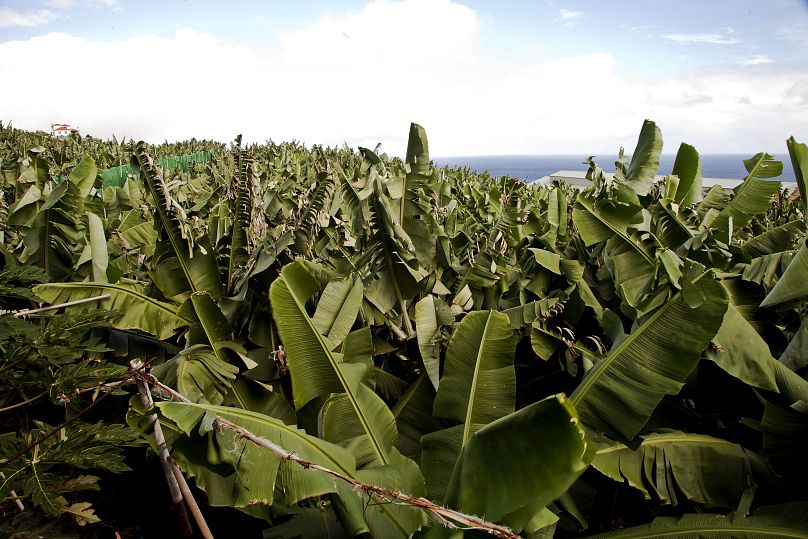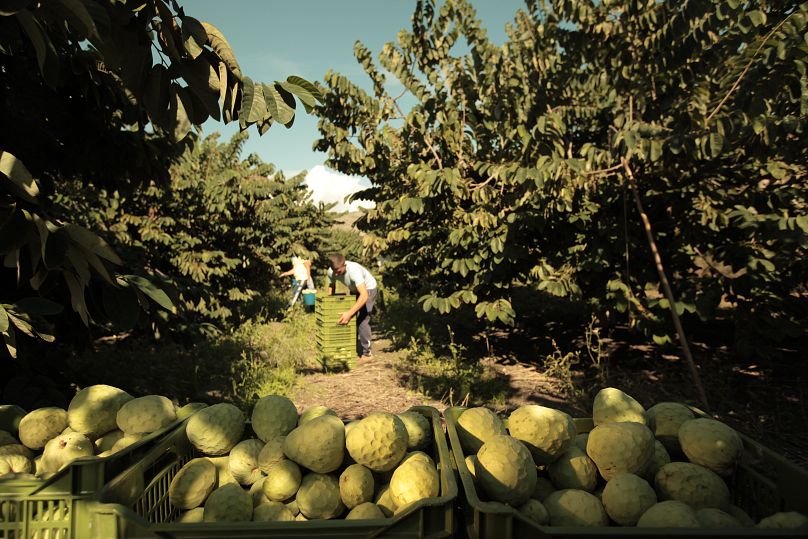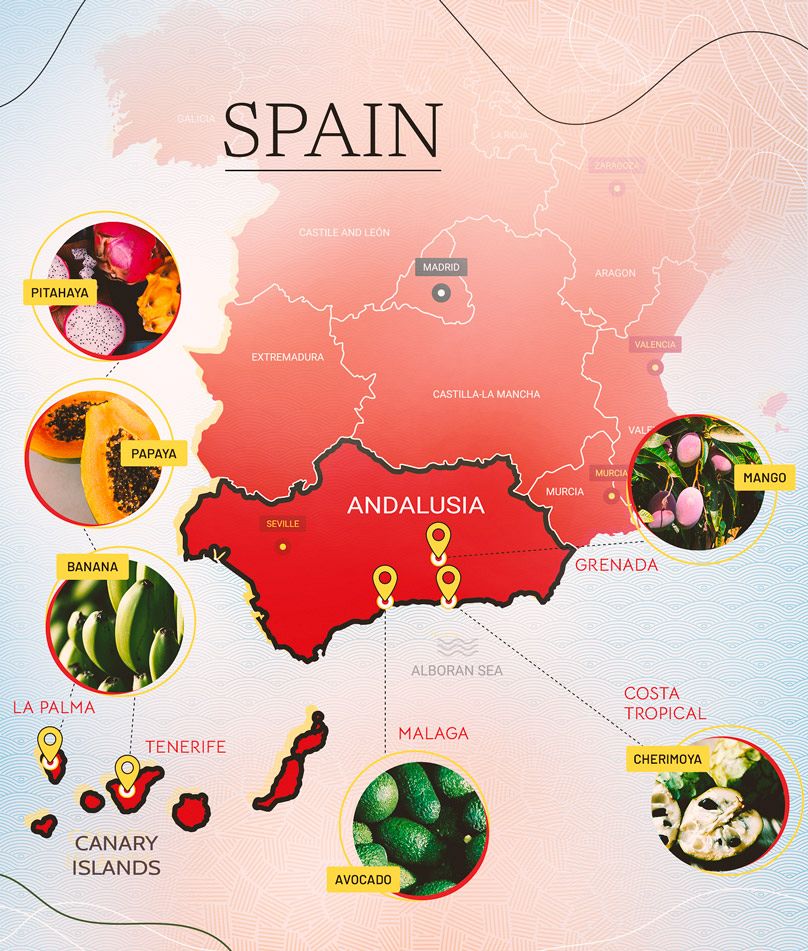When you think of sun-kissed subtropical fruit, you might picture bananas growing in South America or mangoes being harvested in India, but did you know that one European country is also producing subtropical fruit?
When you think of sun-kissed subtropical fruit, you might picture bananas growing in South America or mangoes being harvested in India, but did you know that one European country is also producing subtropical fruit?
Spain also grows juicy fruits such as papaya and mango as well as avocados and bananas and is Europe’s only subtropical producer.
While subtropical fruits are grown in the southern mainland provinces such as Granada and Málaga, the centre of production is the Canaries, particularly the largest island, Tenerife.The island of La Palma comes as close second.
Thanks to year-round sunshine and mild winter temperatures, the climate here is perfect for a wide range of subtropical fruits, including bananas, papayas and pitahayas (dragon fruits).
Spain even produces its own unique varieties such as the Plátano Canario, a special type of banana grown only in the Canaries. It is sweeter than the bananas grown in South America and is highly prized throughout Spain.
“The Canary Islands are exceptional because of the constancy of the climate,” says Manuel Escoda, Marketing Manager at Bonnysa, one of Spain’s biggest fruit and vegetable producers.
“Their subtropical conditions allow for an exceptional cultivation of this type of fruit.”
What conditions do subtropical fruit need to thrive?
“The climate, the soil, the cultivation method…each product requires specific conditions”, Escoda says.
“In the case of subtropicals, as well as adapting the variety to our area, it is a question of reproducing the same conditions.”
In their natural habitat, banana plants require tropical conditions to survive. This means they need temperatures of around 27 degrees and yearly rainfall between 198 and 248 centimetres. While the crops certainly get the right temperatures in the Canaries, water supply is a problem.
The average rainfall in Tenerife is just 10 centimetres a year, so as nature can’t be relied upon, farmers have to turn to irrigation. While this can be worrisome for the environment, Escoda says there is a cleaner method to produce subtropical produce.
“We strive to achieve a balance between the natural needs of the plant and the methods we can apply to be more efficient,” explains Escoda.
“By having the right temperatures, with a lower rainfall, we have managed to get the plant to produce fruit of identical characteristics with drip irrigation, with a much lower water consumption than traditional irrigation.”
While the Canaries have sunshine on tap and water usage can be carefully controlled, another beneficial factor is the fertile volcanic soil. Thanks to Tenerife’s volcano Mount Teide, the soil in the Canaries is rich in minerals - including phosphorus and potassium - that plants need to thrive.
The proof of this is in the number of bananas that Bonnysa can grow in the Canaries.
“At the moment we produce 10 million kilos of bananas from the Canary Islands, 90 per cent of which stay in Spain because of the preference for bananas,” says Escoda.
In total there are more than 8,000 producers growing bananas in the Canary Islands, and more than 400 million kilos are produced every year, according to the Association of Banana Producers of the Canary Islands (ASPROCAN ).
What other subtropical fruits are grown in Spain?
While fruit such as the spikey pitahaya cacti flourish in the Canaries’ dry, arid conditions, back on the mainland, the climate is very different.
The southern region of Andalusia is where you’ll find the bulk of mainland Spain’s subtropical fruit production. Granada’s Mediterranean coastline is aptly known as the Costa Tropical and is home to the lesser-known cherimoya or custard apple.
A green, scaled fruit native to Bolivia, Colombia, Ecuador and Peru, cherimoya are roughly the same size as apples, with a fleshy inside that has the consistency of - you guessed it - custard. The fruit has a sweet and tart flavour, which makes them popular across the country.
While they are delicious, cherimoya isn’t an easy fruit to grow in Spain, as the beetles that pollinate them in their native environment aren’t found here. Each flower must therefore be pollinated by hand, using pollen taken from another flower. Teams of farm workers carry out this laborious process every year.
Avocados and mangoes are also grown in this region. The most popular mango in Spain is a green and mauve-skinned variety called the Osteen. Harvested at the end of August and before they are fully mature, the mangoes then continue to ripen while on their way to the consumer.
Over the coming years, Spain is hoping to produce more subtropical fruit varieties,to become self-sufficient and cut down on food miles, Escoda explains.
“Another challenge we face is to go further in the development of varieties which are currently very limited, and which is a disadvantage compared to non-EU producing countries,” she says.
Where should I go to find the best subtropical fruit in Spain?
If you want to taste some of Spain’s delicious produce, the Canary Islands are the ideal place to sample them. Farmers’ markets across the island stock delicious fruit all year round. And by purchasing locally grown produce, consumers can reduce their carbon footprint too.
“In recent years we have seen exponential growth in the surface area of cultivation,” says Escoda.
“This is due to the fact that our products are valued for their quality and with the added value of being grown in the EU.”















